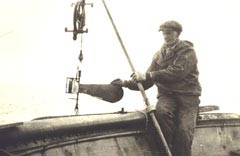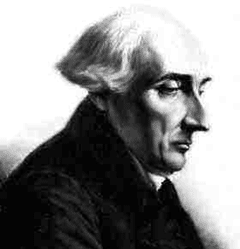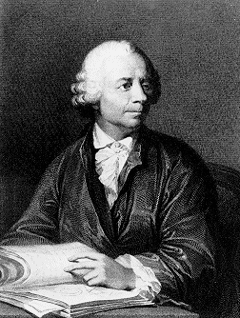Age of Exploration
Currents Tutorial

Since the age of exploration, mariners have needed to know the speed and direction (velocity) of ocean currents to steer their ships within harbors and along trade and exploration routes. A mariner needs to be able to measure the velocity of currents by observing distance, time, and direction.
The simplest method of determining the velocity of a current involves an observer, a floating object or drifter, and a timing device. The observer stands on an anchored ship with a timer. He or she then places the drifter (such as a piece of wood) into the water and measures the amount of time the drifter takes to move along the length of the ship. He or she then stops the timer after the object has traveled some distance, and measures that distance, noting the direction in which the object moved.
The observer then divides the distance the object traveled by the time it took the object to travel that distance, which equals the speed of the current. By combining the speed of the object with the direction in which it moved, the observer can then determine the current’s velocity. Ocean currents typically are measured in knots.
Although they still follow the same essential concept to measure ocean currents, mariners today use more accurate and sophisticated instruments. Today, drifters are often elaborate buoys equipped with multiple oceanographic instruments. Some are equipped with global positioning system technology and satellite communications to relay their position in the ocean back to observers on land. Other drifters submerge for long periods of time to measure the ocean currents at depth. The drifter occasionally rises to the surface to send a signal that relays its position.


All drifter measurements are termed “Lagrangian measurements,” named after mathematician Joseph Louis Lagrange (1736-1813), who first described the path followed by fluids. But current velocities can be measured another way as well—using “Eulerian measurements.” Named after Swiss mathematician Leonhard Euler (1707-1783), Eulerian measurements involve describing fluid flow by measuring the speed and direction of the fluid at one point only. In this method, an instrument is anchored in the ocean at a given location, and the water movement is measured as it flows past the instrument.
Measuring currents by Eulerian methods is becoming increasingly more common. One reason is that it is easier to retrieve these expensive but stationary instruments than it is to locate floating drifters.
Currents Lessons
- Welcome
- Tidal Currents 1
- Tidal Currents 2
- Waves
- Longshore Currents
- Rip Currents
- Upwelling
- The Coriolis Effect
- Surface Ocean Currents
- Boundary Currents
- The Ekman Spiral
- Thermohaline Circulation
- The Global Conveyor Belt
- Effects of Climate Change
- Age of Exploration
- What is a "knot"?
- Shallow Water Drifter
- Deep Ocean Drifter
- Current Profiler
- Shore-based Current Meters
- How Currents Affect Our Lives?
- References
- Roadmap to Resources
- Subject Review